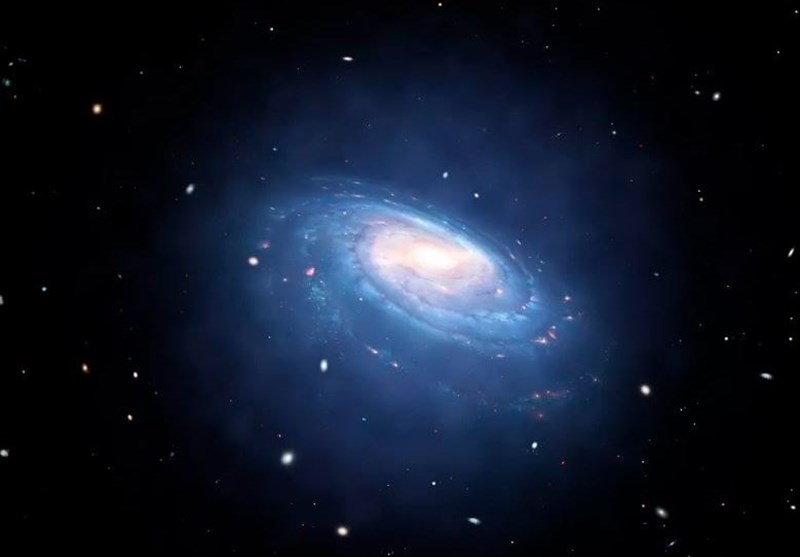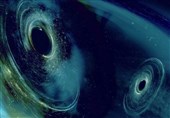New Theory Confirms Einstein’s Prediction about Dark Matter, Dark Energy
TEHRAN (Tasnim) - Scientists may have solved one of modern physics’ biggest questions, with a new paper unifying dark matter and dark energy into a single phenomenon, proving the astonishing prediction that Einstein made 100 years ago.
The new paper unifies dark matter and dark energy into a single phenomenon: a fluid which possesses 'negative mass." If you were to push a negative mass, it would accelerate towards you. This astonishing new theory may also prove right a prediction that Einstein made 100 years ago.
There's a lot of matter to go under the cosmic bridge yet, but a new theory suggests that 95 percent of the universe is filled with a weird "dark fluid".
This might come as a surprise, but we don't really know exactly what makes up our entire universe. Don't freak out though.
An Oxford scientist has proposed a new theory that may have put to bed one of the cosmos' greatest mysteries, Cnet reported.
Scientists long believed that the universe was expanding but would eventually slow down. When the Hubble telescope came along and started looking out into space, it found something weird. The universe was not slowing down -- it was expanding at an accelerating rate. It didn't make sense and astrophysicists could not explain it.
They toiled with a few competing theories but have largely settled on this: 95 percent of the universe is made up of dark matter and dark energy, two phenomena we cannot see but which scientists infer exist because of their effects on the things we can see.
Dark matter and dark energy have been considered separate phenomena, but Jamie Farnes, an astrophysicist at Oxford University, believes that both dark matter and dark energy might exist together as a "dark fluid of negative masses". The fluid would then possess a negative gravity -- instead of pulling objects toward them, they would push them away. It's an unusual concept, but it's not a new one.
Farnes' theory, published in scientific journal Astronomy and Astrophysics, comes to explain a few of the bizarre properties of the universe. For one, galaxies spin so fast that they should rip themselves apart -- but it seems a "dark matter halo" prevents such destruction. The new theory suggests the negative mass "dark fluid" may cause these halos to form.
The negative matter presents a problem though, because it suggests that dark energy would become less dense over time -- and observations suggest that this is not the case, dark energy stays relatively constant. Thus, Farnes utilizes the theory of "matter creation", the idea that more and more of the stuff constantly bursts into existence and replenishes the negative matter that disappears.
His paper uses a great illustrative concept for the model: Space time is empty but "behaves almost like popcorn -- with more negative masses continuously popping into existence."
The "dark fluid" theory is just that, a theory -- based on computer simulation and math. Farnes himself cautions it could be wrong and scientists are right to be suspicious.
"On the face of it, it comes up with some of the features [of our universe] but the question is now: Can it explain the other observations we have of the universe?" says Geraint Lewis, professor of astrophysics at the University of Sydney.
"There's a whole bunch of tests we have to do first before we can say this is equivalent to our current understanding, and then we need to find out what predictions this model makes that the current cosmological model would fail at."
One of the key things that will need to be resolved is the issue around the negative mass. Lewis explains that we do not know the nitty-gritty behind the mechanisms that might create such a phenomenon.
"You can write down equations for various things, but whether or not those things are physically realized we don't know until we actually go out and test the universe," he says.
That means there is work to do -- and that work is already underway, at places like CERN, the European Organization for Nuclear Research, to examine the existence of negative masses similar to those proposed by Farnes. Another project, the Square Kilometre Array, which will be the world's largest radio telescope when built, could also help Farnes' theory get off the ground, so to speak.e
"We've always got to be pushing the frontier of fundamental physics because every time we open up a new area -- at first it seems esoteric and weird -- but eventually it flows into our everyday lives," says Lewis.






